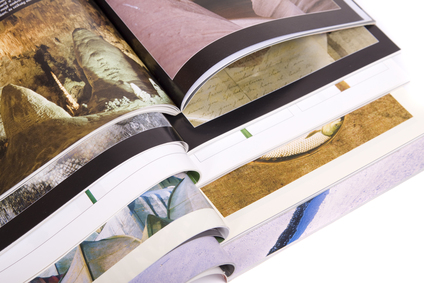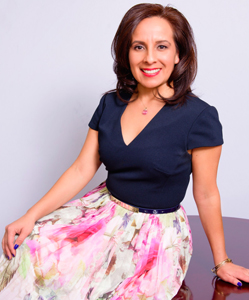Selecting a great idea for an article, targeting a particular magazine for publication and sending our query letters to editors is all part of the puzzle to getting an article published in a magazine or a local publication; however, there is another piece to this puzzle that is just as significant and vital to being successful. This is the actual article itself.
How an article is structured, written and edited is as vital to the process as getting the right idea and slant down or contacting the appropriate editors. This is the second half of the puzzle that is needed to make this process whole. So how should this article be structured to be successfully published? Listed below are some essential steps to ensuring an article has a chance of making it on the published circuit.
Overall Magazine Structure – Article Pattern
For the most part, articles use the same formula with just a little deviation. In most articles you will find the standard pattern of a title, sometimes a subtitle is used but not always, a hook or a lead (1-3 paragraphs), a theme statement that indicates what the article is about (swing paragraph), the body of the article (this can include anecdotes, dialogue, scenes), transitional sentences within the body (needed to make the article transition smoothly between thoughts), facts (needed to ensure that the article stands it weight) and a conclusion (reason why article is written; many editors prefer that you have a wrap-up or wrap around conclusion). The wrap around is where the writer points back to the title or to the hook.
Magazine Content
Slants and Tones – Understanding the type of slant that will be used for your article is crucial. This is also known as “peg.” This, of course, goes hand-in-hand with your style of writing and what makes you unique. Having a good grasp on the focus of the magazine along with a good slant for your article is what will determine whether an article will be published or not. For instance, the slant of your article can be written using an amusement angle, an educational twist or a controversial position but yet it will still carry the particular bias that is structured for that magazine. Another factor can be the timing of the article to events that are currently happening such as a holiday or other special occasions.
The next step is to slant your articles in the way that a magazine is focused. This is where your research comes in handy. It is important to understand the mission statement of the particular magazine you are targeting and to understand the overall message it sends to its targeted audience. Make sure that the slant is visible in the first paragraph of your article. The editor will want to see this right away.
As you write and review the article, ensure that the correct tone of the article is consistent throughout and that it is appropriate for the target audience.
Leads and Hooks – A hook is the most important thing to capture your audience and thereby make them want to read your article. Understanding the use of the various types of hooks is necessary to be successful. If you are not familiar with hooks read up on how to best incorporate these into your writing. There are lots of sources that can help out with this. The general well known hooks are question mark, descriptive, dialogue, general interest lead, statistical, surprise-twist lead and anecdotal-lead.
It is about understanding what a particular magazine likes and then knowing the guidelines before submitting your written material.
Thesis – What goes into a thesis? First you begin by creating a one or two paragraph thesis and then you provide a few thoughts to prove or disprove your statement. Remember that opinions are usually reserved for authoritative, expert or famous people in a particular industry. It does not mean that you insert your opinion here unless you qualify as one of those people. Once you provide all the facts you will want to summarize your data or findings. Editors usually like it if you can wrap your closing back to the title or hook. Editors will accept other types of closings but prefer the wrap around method.
In general terms you should check to ensure that your thesis statement can be easily located in the article and that it reflects the points you are trying to get across. Be sure that those points are clearly defined and in the correct order for the reader. You should also look for any serious errors in the logic.
Checklist for Overall Magazine Article Completion
As you begin your project, it’s probably a good idea to have a checklist to ensure that you don’t miss anything. Checklists work great and it helps to keep you on task. It’s best to put together a checklist that will work for you; however, a checklist has been created for your convenience.
Questions to include on your checklist:
- Was my upfront research for the magazine sufficient?
- Did I review the editor’s preferred stories and did I write my article accordingly?
- Was the appropriate slant and message used for the article and magazine?
- Do I have the appropriate title for the article?
- Did I use the appropriate thesis statement?
- Did I include the appropriate points to prove or disprove my thesis?
- Did I include the right amount of facts in the article?
- Does the article have an appropriate tone throughout?
- Was the appropriate audience targeted?
- Were my transitions smooth throughout the article?
- Was the article “stuffed” with information or was it just enough?
- Did I make the article interesting for the reader?
- Was the article easy to follow?
- Did I include too much of my favorite words?
- Were the anecdotes appropriate for this article?
- Did I check for grammar and punctuation?
- Did I include appropriate charts and illustrations?
- Did I include photos if applicable?
- Was my closing done correctly (wrap-around closing)?
- Does my article look neat and professional?
- Did I have others review for input before submitting?
Checklist for Grammar and Punctuation 
As writers it’s difficult to remain objective when editing or reviewing your own material. It usually stems from being so involved in reading our own writing that it’s difficult to step away from it. Don’t get discouraged — everyone has this dilemma. Just like the checklist that is used for overall article completion, the same applies for grammar and punctuation. You need one for this as well. Start with the checklist below. If you need to include other grammar and punctuation sections (especially if there are areas where you know you struggle) then add them to the list.
Articles
Capitalization
Commas
Dashes
Fragment Sentences
Italics and Underlining
Modifier Placement (Misplaced, dangling, squinting)
Parallelism
Plurals and Possessives
Quotation marks
Question marks
Pronouns
Pronoun/Antecedent Agreement
Redundancies
Run-ons
Semi-colons
Spelling
Subject/Verb Agreement
Tense Sequence
Use of Numbers
Understanding your grammar and punctuation rules is a must as this illustrates to an editor that you are serious about your craft. This also lets them know they won’t have to spend an enormous amount of time correcting your work. If you are not good with grammar or punctuation then get familiar with this or make sure that you have someone who is good at this to review your material before submitting to an editor. Another option is to get some good books that cover these areas and become proficient on both. Understanding grammar and punctuation is a writing skill that is necessary for the craft.
Checklist for Article Layout
When submitting your article there are guidelines to be followed and listed below are some details on article layout. They are:
- Always double space your article when submitting to an editor. This allows them room to make comments if necessary.
- In the top left corner include your name, address and a zip code. This is only needed on the first page.
- The top Margin should be between 1 ¼ to 1 ½ inches.
- In the top right corner and parallel to your name include the number of words in your article.
- Add a double space after your zip code and include your fax and telephone number and your email address.
- A third or half way down the page type the title of your article in caps. Center the title. Double space again and include your name.
- Double space once more and begin your story.
- Remember to indent 5 spaces before every paragraph.
- Remember to start with a new paragraph when using dialogue.
- When including a break in your article, you can show this by double spacing twice or centering three pound marks or ampersand signs between the section breaks.
- Always end your article with a period or a question mark.
- When submitting your paper make sure that you paperclip on the left hand side. Only use metal paperclips as these seem to work best. There is nothing more frustrating for an editor than to open up a submittal and find that it hasn’t been paper clipped. Papers get lost if not kept together.
- Don’t forget to review this checklist against the writer’s guidelines that you’ve received from publishers to ensure there is no conflict with their requests.
Because there are so many factors involved in completing an article and getting it published, following a check list ensures that you have covered all the angles and nothing is left out. Editing written work is not always fun but once you have a good finished product and your article gets published it will be rewarding.





